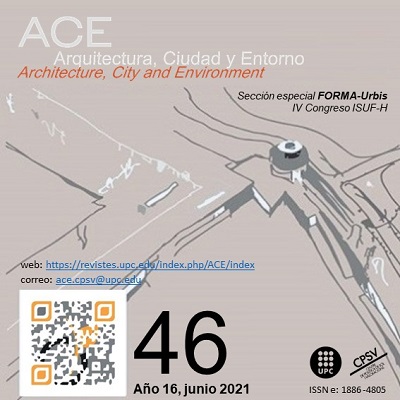Accessibility and Historical Territory in Italy: Resilient Strategies for Revitalization, Between Secondary Railways and Landscape Networks
DOI:
https://doi.org/10.5821/ace.16.46.9890Keywords:
Mobility infrastructure, historic centres, mobility, resilienceAbstract
The issue of the revitalization of minor historical centres involves the theme of accessibility as a condition of resilience and as a fundamental component of regeneration strategies. On the one hand, territorial policies pay attention to collective transport as an interpretative evolution of the "right to the city", to guarantee liveability and social inclusion and reactivate economies in disadvantaged territories. In addition, the international strategic lines recognize the connotation of historical infrastructures (historical railways, transhumance routes), as common goods capable of tracing a morphological reconfiguration and enhancing the landscape. In this context, infrastructure networks enable the reconnection of small historic centres between each other and with the dynamics territories. Furthermore, infrastructure networks represent an interesting field of Italian research in the context of integrated and multi-scalar approaches. The paper develops a reflection on the opportunities offered by sustainable mobility for the improvement of the Italian peripheral territories, from its cultural roots to the natural and built heritage and to the socio-economic structure. The analysis deepens the Italian case studies in which the inter-municipal dimension is the emblematic reference for integrated and multi-scale approaches that are based on the centrality of mobility planning. In these cases, the regeneration strategies are activated through the network connection of the historic territory and the strengthening of the infrastructure links, enhancing the morphological guidelines and the landscape networks.
Downloads
Published
Issue
Section
License
| INTELECTUAL PROTECTION CRITERIA |
At this moment, it is count with the "Oficina Española de Patentes y Marcas", while global protection it is being processed by the World Intelectual Property Organization (OMPI/WIPO). Nevertheless the International Standard Serial Number Office (ISSN) has given the following numbers ISSN: 1886-4805 (electronic version) and 1887-7052 (paper version). All articles will be peer reviewed, using double blind reviewing. |
| COPYRIGHT |
The article contents and their comments are authors exclusive liability, and do not reflect necessarily the journal editor commitee's opinion. All ACE published works are subject to the following licence CC BY-NC-ND 3.0 ES http://creativecommons.org/licenses/by-nc-nd/3.0/es/ It implies that authors do not hold nor retain the copyright without restrictions but only those included in the licence. |





































